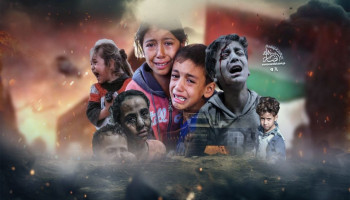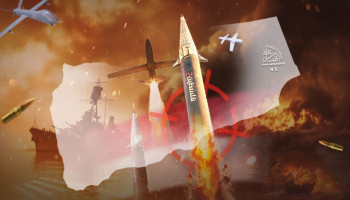A new study published by the Australian platform, The Conversation, has highlighted that Western and American media have been employing double standards in their coverage of the crises in Yemen and Ukraine. The research, conducted by academics Esther Beato Ruiz and Jeff Beckman from the American University of International Service, suggests that these discrepancies in reporting are largely influenced by the political leanings of the West and the United States.
The study scrutinizes the American media's intense focus and clear attribution of blame on Russia for the Ukrainian crisis, while simultaneously downplaying the role of coalition forces in the Yemeni conflict.
Centering on The New York Times due to its global influence and widespread readership, the researchers compared the newspaper's coverage of the two conflicts over varying periods. They uncovered significant bias in both the extent and tone of the coverage, which appeared to mirror the foreign policy objectives of the United States.
The researchers revealed that The New York Times published 546 articles on Yemen from March 26, 2015 to November 30, 2022, but within a period of less than three months, published even more articles on Ukraine. Stories about Ukraine proliferated on the front page of the publication since the onset of the Russian operation, whereas Yemen received far less prominence, with coverage of the food security crisis only appearing three years into the blockade that precipitated it.
The study also uncovered a distinct selectivity in the volume and type of coverage, the attribution of responsibility for crimes, and the portrayal of the Saudi-led coalition's role in the Yemeni humanitarian crisis. This selectivity was starkly highlighted in the headlines, which were mostly incidental for Yemen, focusing on isolated events without contextual linkage, in contrast to the substantive headlines for Ukraine that provided a broader context.
For instance, one headline read, "A Saudi strike kills at least nine in a Yemeni family," while another stated, "Brutal Russian attacks trigger genocide accusations in Ukraine." The researchers contend that this discrepancy in context was a deliberate attempt to guide readers towards specific interpretations of the events.
The study also identified a glaring difference in assigning responsibility for attacks. Out of 50 headlines about specific coalition attacks in Yemen, only 18 mentioned Saudi Arabia and its allies, while 50 out of 54 headlines about specific attacks in Ukraine directly attributed responsibility to Russia.
Furthermore, the researchers discovered that The New York Times' portrayal of the humanitarian crisis in both countries was notably skewed. Actions by Russia that obstructed grain exports and damaged agriculture were depicted as intentional, while the Saudi-led aggression's role in causing famine was often not mentioned.
The researchers concluded that The New York Times, along with other Western media, employ moral double standards in their coverage of the Yemen and Ukraine conflicts. Headlines about Ukraine frequently invoked moral judgments, casting Russia as the villain, while the tone for Yemen was more neutral, despite human rights reports condemning the actions of the Saudi-led aggression.
The study concludes that such editorial decisions result in Yemeni civilians being relegated to the status of forgotten victims. Their suffering is obscured by imprecise figures, detached language, and narratives of inevitable warfare, effectively masking the role of the United States in Yemen's plight.







